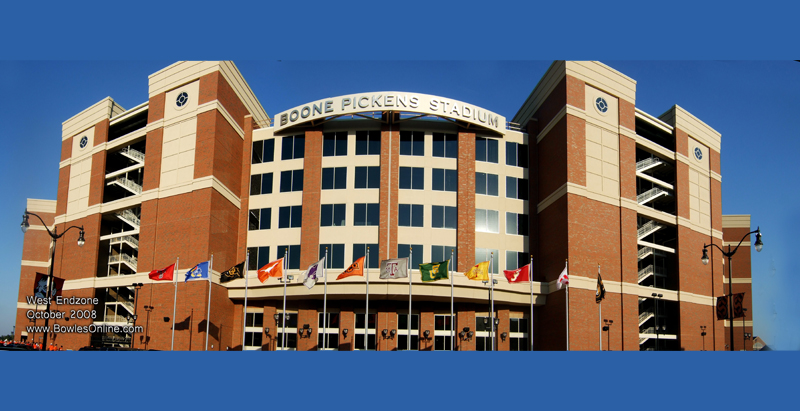Plumbing should always be looked at in the VE process, if for no other reason than there are a lot of units of pipe in a project. There are lots of places in a DWV system where value can be captured, but there are applications where what looks like value can mask risks that you might not want to take.
Because of financial realities, value engineering can often mean the difference between a project being shelved or a building being built. This creates tremendous pressure for VE practitioners to lower the first cost of any project. Often, this is a reasonable thing to do. The danger is that, when pushed too far, cost-cutting can add unacceptable risk, lower the value of the building and hide expenses in the total cost of ownership. That's what happened with the largest building project in recent NCAA history, the T. Boone Pickens Stadium at Oklahoma State University.
The Facts
In 2011, two years after the Stadium opened, a break in a plastic drain pipe was found. An inspection of the rest of the system revealed 15 other breaks. The football team was forced to abandon the facility for five months while contractors jackhammered thorough concrete floors to fix the problems.
Litigation was eventually settled in February 2015, for $700,000. The biggest portion of the settlement ($400,000) was paid by the firm that did the architectural, engineering and design work. The manufacturer of the water heaters used in the renovations, agreed to pay $125,000 of the settlement. This suggests that the maximum working temperature of PVC was exceeded, leading to collapse and failure. Unfortunately, this avoidable mistake is more common than it should be.
The Take-Aways
PVC can be used successfully below ground, but it requires careful installation and soil prep per ASTM D2321. Further, if its maximum working temperature will be exceeded, it can't be used. PVC is only a value when it doesn't fail. To make value engineering DWV systems easier to understand, we have prepared a downloadable brochure and handy checklist.

At Charlotte Pipe, we make both PVC and Cast Iron pipe. We are proud of the products that we make with both materials, but it doesn't do anybody any good when a fine material is used in the wrong application. If you have any questions about value engineering DWV systems -- even if you aren't using our pipe -- please call Charlotte’s Technical Services Department at 800-438-6091.
Related Stories
| Aug 11, 2010
Jacobs, HDR top BD+C's ranking of the nation's 100 largest institutional building design firms
A ranking of the Top 100 Institutional Design Firms based on Building Design+Construction's 2009 Giants 300 survey. For more Giants 300 rankings, visit http://www.BDCnetwork.com/Giants
| Aug 11, 2010
Polshek Partnership unveils design for University of North Texas business building
New York-based architect Polshek Partnership today unveiled its design scheme for the $70 million Business Leadership Building at the University of North Texas in Denton. Designed to provide UNT’s 5,400-plus business majors the highest level of academic instruction and professional training, the 180,000-sf facility will include an open atrium, an internet café, and numerous study and tutoring rooms—all designed to help develop a spirit of collaboration and team-oriented focus.
| Aug 11, 2010
Callison, MulvannyG2 among nation's largest retail design firms, according to BD+C's Giants 300 report
A ranking of the Top 75 Retail Design Firms based on Building Design+Construction's 2009 Giants 300 survey. For more Giants 300 rankings, visit http://www.BDCnetwork.com/Giants
| Aug 11, 2010
New Ways to Improve Water Efficiency
In the U.S. and most of the industrialized world, building occupants take for granted the simple convenience of filling a glass with clean, drinkable water at the kitchen sink. Yet worldwide, nearly a billion people globally have no access to safe drinking water, according to the Natural Resources Defense Council.
| Aug 11, 2010
News Briefs: GBCI begins testing for new LEED professional credentials... Architects rank durability over 'green' in product attributes... ABI falls slightly in April, but shows market improvement
News Briefs: GBCI begins testing for new LEED professional credentials... Architects rank durability over 'green' in product attributes... ABI falls slightly in April, but shows market improvement
| Aug 11, 2010
AIA course: MEP Technologies For Eco-Effective Buildings
Sustainable building trends are gaining steam, even in the current economic downturn. More than five billion square feet of commercial space has either been certified by the U.S. Green Building Council under its Leadership in Energy and Environmental Design program or is registered with LEED. It is projected that the green building market's dollar value could more than double by 2013, to as muc...
| Aug 11, 2010
Great Solutions: Products
14. Mod Pod A Nod to Flex Biz Designed by the British firm Tate + Hindle, the OfficePOD is a flexible office space that can be installed, well, just about anywhere, indoors or out. The self-contained modular units measure about seven feet square and are designed to serve as dedicated space for employees who work from home or other remote locations.







